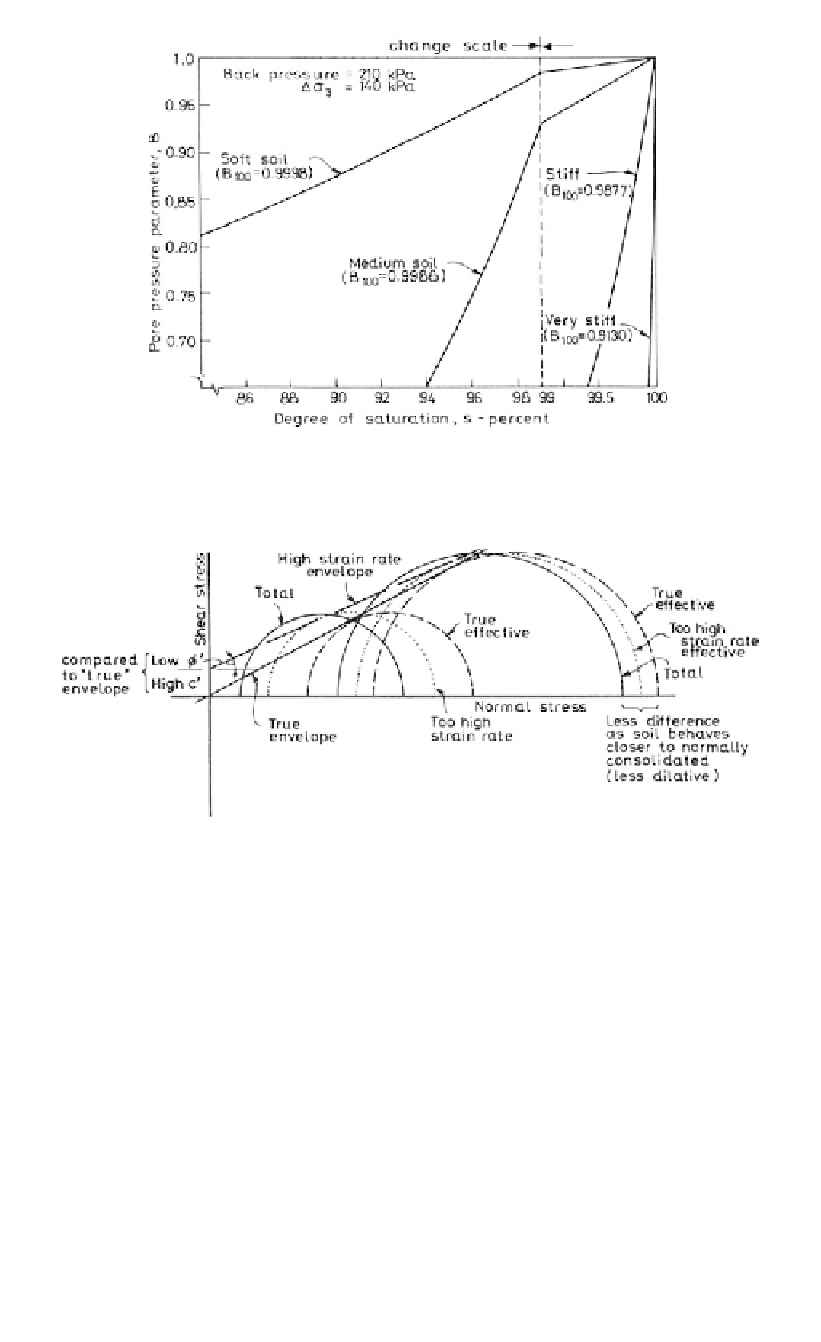Environmental Engineering Reference
In-Depth Information
Figure 6.13.
Variation of B-value with degree of saturation for four classes of soil (Black & Lee, 1973,
reproduced with permission of ASCE).
Figure 6.14.
The effect of high strain rate on CUDPP triaxial tests.
shearing is occurring, because of the restraint effects of the top and bottom of the
sample. Since there is a reduction in pore pressure during shearing of an overconsol-
idated clay, the Mohr circle plots based on measured pore pressures are displaced to
the left of where they should be.
The negative pore pressure response to shearing is less for the sample at higher
confining stress where the soil behaves closer to a normally consolidated soil, so the
displacement of the Mohr's circle for the higher confining stress is less than that for
the lower confining stress.
This yields overall an increase in c
. The effect is similar for
CD tests, where negative pore pressure will remain in the centre of the sample if the
strain rate is too high, giving an apparent increase in failure stress (
, and a decrease in
1
), which again
will be greater for samples at lower confining stresses than for higher confining
stresses.
It is generally accepted (e.g. Germaine and Ladd, 1988; Bishop and Henkel, 1957,
1971; Lade, 1986) that 95% dissipation (for drained tests) or 95% equalisation (for
CUDPP tests) gives adequately accurate results.

